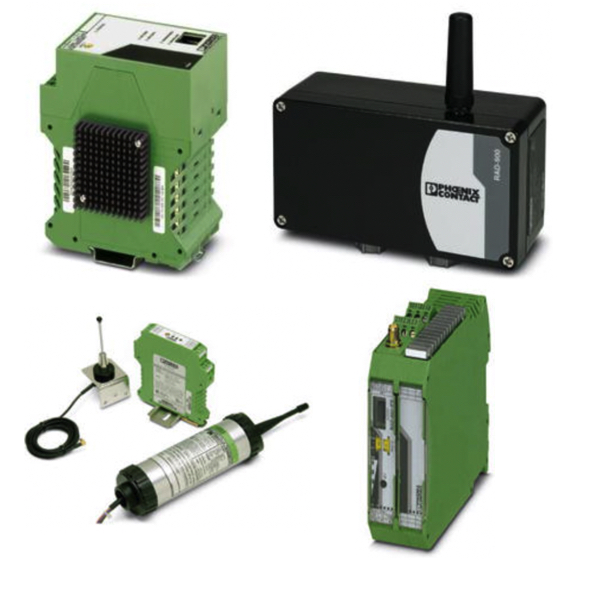Phoenix Contact Radio Line

Phoenix Contact Radio Line wireless solutions are designed to support reliable industrial communication across long distances and challenging environments. Available as licensed, unlicensed, cellular, and I/O radios, these devices support both 12 VDC and 24 VDC power sources and can be configured for point-to-point or point-to-multipoint network topologies. They are well-suited for applications requiring dependable data transmission without physical cabling.
Licensed industrial radios typically operate in the 150–470 MHz frequency range, offering advantages such as reduced interference, improved signal penetration, lower line-of-sight sensitivity, and extended transmission distances. Unlicensed radios operate in the 900 MHz, 2.4 GHz, and 5.8 GHz bands, providing higher bandwidths that support faster data rates and compatibility with third-party Wi-Fi devices. These options allow users to balance range, throughput, and regulatory considerations based on application requirements.
Phoenix Contact wireless solutions include Ethernet, serial, and I/O radios with operating ranges up to 10 miles (16 km) for select 2.4 GHz Ethernet models and up to 5 miles (8 km) for I/O radios delivering data rates up to 500 Kbps. The Radioline wireless system is particularly suited for large-scale installations, transmitting I/O signals and serial data securely over several kilometers using frequency hopping spread spectrum (FHSS) and AES encryption to ensure reliable and secure communication.
FAQs
Q: What types of radios are available in the Phoenix Contact Radio Line?
Phoenix Contact offers licensed, unlicensed, cellular, and I/O radios to support a wide range of industrial Ethernet, serial, and signal transmission needs.
Q: What is the difference between licensed and unlicensed industrial radios?
Licensed radios operate in regulated frequency bands with less interference and longer range, while unlicensed radios offer higher bandwidth and faster data rates but may have reduced range and higher susceptibility to interference.
Q: What frequency ranges are supported by Phoenix Contact radios?
Phoenix Contact radios operate across multiple frequency ranges including 400 MHz, 900 MHz, and 2.4 GHz, depending on the model and application.
Q: What is the range of Phoenix Contact industrial wireless radios?
Certain 2.4 GHz Ethernet radios offer ranges up to 10 miles (16 km), while I/O radios typically support ranges up to 5 miles (8 km), depending on conditions and configuration.
Q: What makes the Radioline system suitable for large installations?
Radioline supports long-distance transmission of I/O signals and serial data with secure communication using FHSS and AES encryption, making it ideal for distributed industrial systems.
Why Buy Phoenix Contact Radio Line Wireless Solutions from RSP Supply
RSP Supply offers a broad selection of Phoenix Contact Radio Line wireless radios for industrial communication applications. These solutions support secure, long-range data transmission, flexible network topologies, and multiple frequency options to meet diverse system requirements. Customers rely on RSP Supply for knowledgeable technical support and dependable access to industrial wireless components built for demanding environments.

